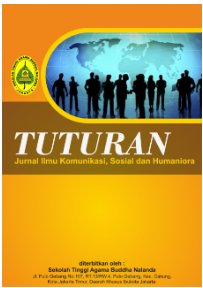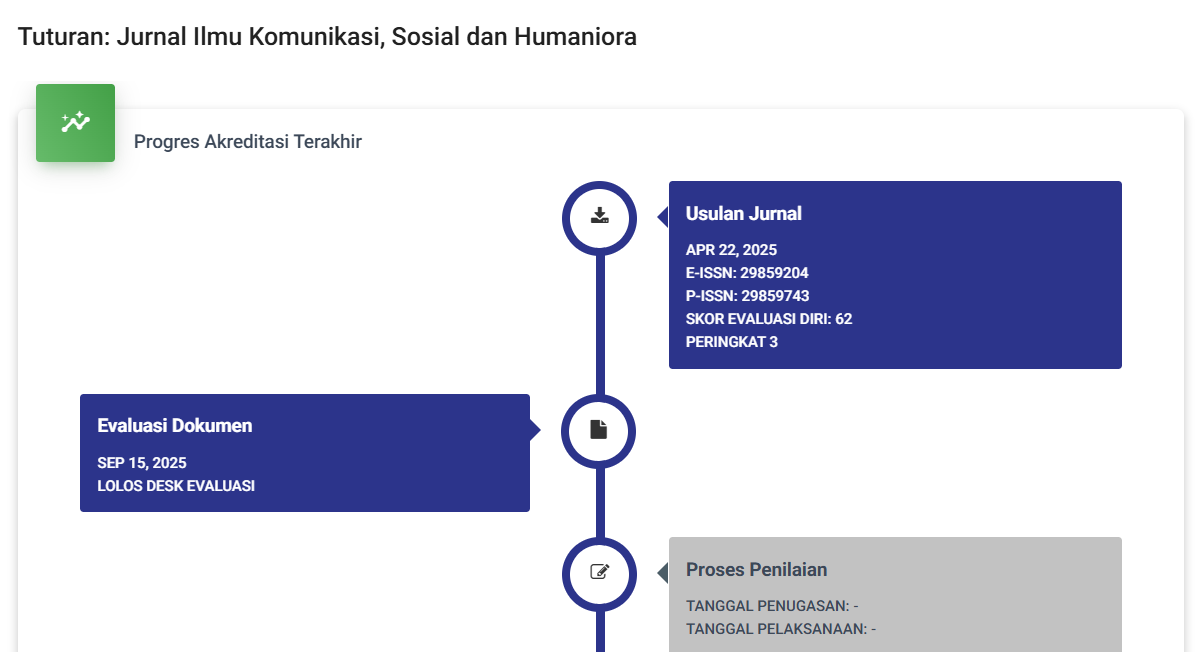Representasi Poligami dalam Film Bismillah Kunikahi Suamimu
Analisis Semiotika Roland Barthes
DOI:
https://doi.org/10.47861/tuturan.v2i4.1313Keywords:
Representation of Polygamy, Bismillah Kunikahi Suamimu, SemioticsAbstract
Films can have a strong emotional impact and connect viewers with personal stories. Society's perspective regarding polygamy in films is often negative, which ends in discrimination against third parties. One of the films that tells the story of polygamy is the film Bismillah Kunikahi Suamimu. A film that invites viewers not to think negatively about polygamy. From this problem, the author is interested in studying the representation of polygamy using Roland Barthes' semiotic theory, as well as examining how polygamous life does not have a negative ending. The method used in this research is descriptive qualitative with analysis of Roland Barthes' semiotic theory examining the signs in this film and the pressure to search for meaning in denotation, connotation and myth. The data collection techniques used in this research are observation, documentation and interviews. The results of the research shown are several meanings of denotation, connotation and myth that represent polygamy in the house steps and shows the importance of exploring further the meaning of polygamy as a whole, both in terms of conditions, reasons and impacts. Other results show that in the film Bismillah Kunikahi Suamimu, polygamy can be carried out if the husband can fulfill the requirements and clear reasons and the husband can treat his wives fairly.
References
Alpina, C., Rozi, F., & Desky, A. F. (2023). Representasi pubertas pada remaja perempuan dalam film animasi “Turning Red” (Analisis semiotika Roland Barthes). Jisos: Jurnal Ilmu Sosial, 1(12), 1175–1188.
Andhita, P. R. (2021). Komunikasi visual (Issue v. 1). Zahira Media Publisher. https://books.google.co.id/books?id=ico5EAAAQBAJ
Fatimah. (2020). Semiotika dalam kajian iklan layanan masyarakat (S. Pd., M. Pd. Syahril, Ed.). TallasaMedia.
Laily, M., Wati, K., Rohman, F., & Yuniawan, T. (2023). Analisis semiotika Roland Barthes dan nilai moral dalam film pendek Tilik 2018 karya Wahyu Agung Prasetya. In Bahasa dan Sastra (Vol. 9, Issue 2). Pendidikan. https://e-journal.my.id/onoma
Latupono, B. (2020). Kajian juridis dampak poligami terhadap kehidupan keluarga. Bacarita Law Journal, 1(1), 15–27. https://doi.org/10.30598/bacarita.v1i1.2788
Muhammad, H. (2020). Poligami.
Putra, R. W. (2021). Pengantar desain komunikasi visual dalam penerapan (E. Risanto, Ed.). Penerbit ANDI.
Rachman, R. F. (2020). Representasi dalam film. Jurnal Paradigma Madani, 7(2), 10–18.
Rakhmat, J., & Ibrahim, I. S. (2016). Metode penelitian komunikasi. Simbiota Rekatama Media.
Rofiq, A. (2019). Hukum perdata Islam Indonesia. PT. RajaGrafindo Persada.
Rohmadi, R., Fauzan, F., & Jafar, W. A. (2022). Positive and negative impacts of polygamy in the life of Muslim family. Madania: Jurnal Kajian Keislaman, 26(1), 75. https://doi.org/10.29300/madania.v26i1.6483
Sakinah, A. (2021). Analisis semiotika makna jujur dalam film Surga yang tak dirindukan 3.
Saputri, I. M. (2020). Studi komparasi praktik poligami pada masa Rasulullah dengan praktik poligami pada masa sekarang di Kabupaten Jepara (Studi kasus di Kecamatan Pecangaan Kabupaten Jepara).
Satinem. (2019). Apresiasi prosa fiksi: Teori, metode, dan penerapannya. Deepublish. https://books.google.co.id/books?id=ZiC4DwAAQBAJ
Sienna. (2014). Poligami. Pengadilan Agama Situbondo.
Simanullang, E. P., & Yesicha, C. (2018). Representasi poligami dalam film Athirah (Studi analisis semiotika John Fiske). Jom Fisip, 5, 1–15.
Sulistiani, S. L. (2022). Hukum perdata Islam: Penerapan hukum keluarga dan hukum bisnis Islam di Indonesia. Sinar Grafika. https://books.google.co.id/books?id=Kg5zEAAAQBAJ
Sulistiyo, U. (2023). Metode penelitian kualitatif. PT Salim Media Indonesia. https://books.google.co.id/books?id=nJm8EAAAQBAJ
Susanto, D., Risnita, & Jailani, M. S. (2023). Teknik pemeriksaan keabsahan data dalam penelitian ilmiah. Jurnal QOSIM Jurnal Pendidikan Sosial & Humaniora, 1(1), 53–61. https://doi.org/10.61104/jq.v1i1.60
Vindriana, N. D., Mustamar, S., & Mariati, S. (2018). Politik kebudayaan dalam novel Sinden karya Purwadmadi Admadipurwa: Kajian semiotika Roland Barthes. Jurnal Universitas Jember, 19, 76–88.
Downloads
Published
How to Cite
Issue
Section
License
Copyright (c) 2024 TUTURAN: Jurnal Ilmu Komunikasi, Sosial dan Humaniora

This work is licensed under a Creative Commons Attribution 4.0 International License.








